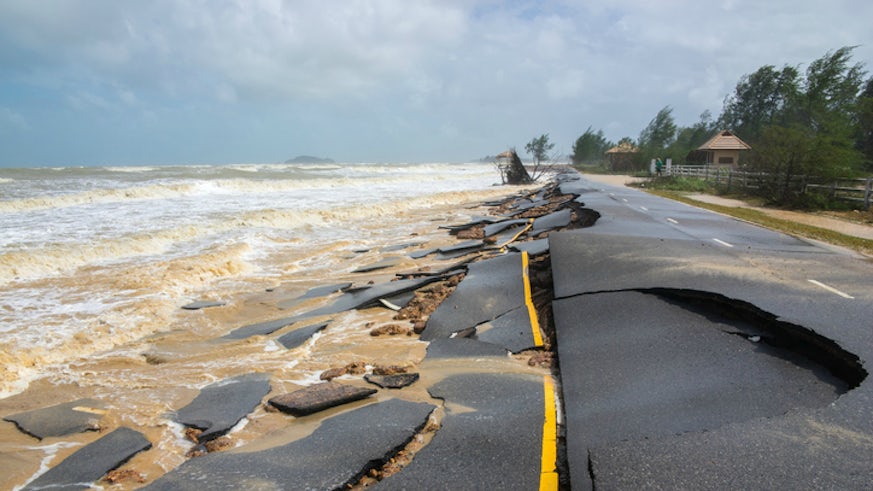Megathrust earthquakes
19 December 2016

The raggedness of the ocean floors could be the key to triggering some of the Earth’s most powerful earthquakes, scientists from Cardiff University have discovered.
In a new study published today in Nature Geoscience the team, also from Utrecht University, suggest that large bumps and mounds on the sea floor could be the trigger point that causes the crust in the Earth’s oceans to drastically slip beneath the crust on the continent and generate a giant earthquake.
By studying exposed rocks from a 180-million-year-old extinct fault zone in New Zealand, the researchers have shown, for the first time, that the extremely thick oceanic and continental tectonic plates can slide against each other without causing much bother, but when irregularities on the sea floor are introduced, it can cause a sudden slip of the tectonic plate and trigger a giant earthquake.
The researchers believe that this information, along with detailed subsurface maps of the ocean floor, could help to develop accurate models to forecast where large earthquakes are likely to occur along subduction zones, and therefore help to prepare for disasters.
For generations scientists have known that the largest earthquakes, known as megathrust earthquakes, are triggered at subduction zones where a single tectonic plate is pulled underneath another one. It is also in these regions that volcanoes form, as is most common in the so-called ‘Ring of Fire’ in the Pacific Ocean – the most seismically active region in the world.
The most recent megathrust earthquake occurred in Tohoku, Japan in 2011. The magnitude 9 earthquake triggered a 40 metre-high tsunami and claimed over 15,000 lives with economic costs estimated at US$235 billion.
However, there are many regions across the world, including in the ‘Ring of Fire’, where scientists would expect megathrust earthquakes to occur, but they don’t.
The new research appears to have solved this conundrum and therefore propose an explanation as to what triggers giant earthquakes. The team arrived at their conclusions by examining rocks that, through erosion and tectonic uplift, have been carried to the Earth’s surface from depths of 15-20km in an extinct fault zone in New Zealand that was once active around 180 million years ago.
The team found that the rocks in the fault zone can be tens to hundreds of metres thick and can act as a sponge to soak up the pressure that builds as two tectonic plates slip past each other.
This means that movement between two plates can commonly occur with no consequences, and that it takes a sudden change in the conditions, such as a lump or mound on the sea floor, to trigger an earthquake.

“By exhuming rocks from this depth, we’ve been able to gain an unprecedented insight into what a fault zone actually looks like.”
“With an active fault in the ocean, we can only drill to a depth of 6km, so our approach has given us some really valuable information,” said Dr Ake Fagereng, lead author of the study from Cardiff University’s School of Earth and Environmental sciences.
“We’ve shown that the fault zone along plate boundaries may be thicker than we originally thought, which can accommodate the stress caused by the creeping plates. However, when you have an irregularity on the sea floor, such as large bumps or mounds, this can cause the plate boundaries to slip tens of metres and trigger a giant earthquake.”

